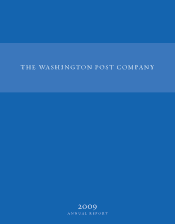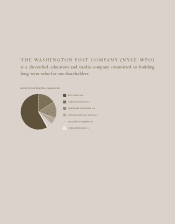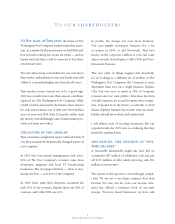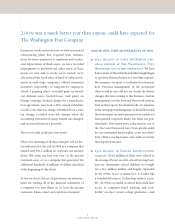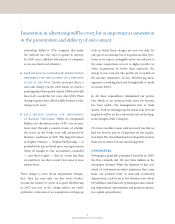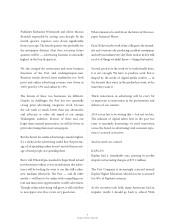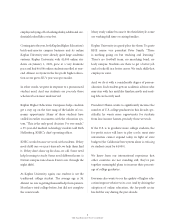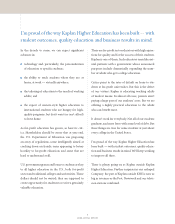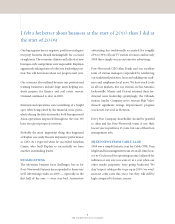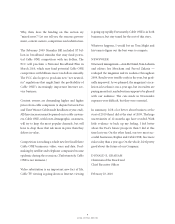Washington Post 2009 Annual Report Download - page 6
Download and view the complete annual report
Please find page 6 of the 2009 Washington Post annual report below. You can navigate through the pages in the report by either clicking on the pages listed below, or by using the keyword search tool below to find specific information within the annual report.
technology killed it. (The company that made
the software was very slow to update it; anyway,
by 2009, most children had plenty of computer
access in school and at home.)
n $33.8 million in accelerated depreciation
primarily for the closing of a printing
plant at the Post. On the one hand, this is a
non-cash charge. On the other hand, we closed a
printing plant that opened only in 1998 and would
have had a useful life for years after 2009. Plant
closing expenses have all been fully booked, so this
charge won’t recur.
n $25.4 million charge for impairment
at Kaplan Ventures. When we reorganized
Kaplan (see discussion in the 10-K), our accoun-
tants went through a normal review of whether
the assets on the books were still warranted by
business conditions in 2009. The largest business
in Kaplan Ventures — Kaplan EduNeering — is
profitable but has not lived up to our expectations
when we bought it. Our accountants concluded
— and they’re right — that it’s worth less than
we paid for it (in other words, I lost some of your
money here).
Three things to note about impairment charges:
first, they are non-cash (on this year’s books);
second, the money we spent to acquire EduNeering
in 2007 was real, so the charge reflects an overly
optimistic evaluation of an acquisition catching up
with us; third, these charges are one-way only. It’s
only good accounting, but if acquisitions don’t per-
form as we expect, intangible assets are reduced; if
the same acquisitions recover to higher profits (or
other acquisitions do better than expected), the
charge is not reversed (the profits are recorded on
the income statement). In fact, EduNeering man-
agement is working hard and thoughtfully to make
its results better.
In all, these expenditures diminished our profits.
Our ability to use pension fund assets for buyouts
has been useful. Our management tries to make
money, both on earnings reports and in cash. But our
emphasis will be on the cash results and on the long-
term strength of the Company.
Of course, another reason cash increased was that we
had our slowest year in a long time on the acquisi-
tion front. We chased hard and were hopeful on more
than one occasion, but not much happened.
NEWSPAPERS
Newspapers generally performed horribly in 2009;
the Post certainly did. We lost $164 million in the
newspaper division. While the majority of this con-
sisted of retirement-incentive payments that came
from our pension fund or non-cash accelerated
depreciation, cash losses at the division were about
$33 million (cash losses are operating income, exclud-
ing depreciation, amortization and pension expense,
less capital expenditures).
4
THE WASHINGTON POST COMPANY

